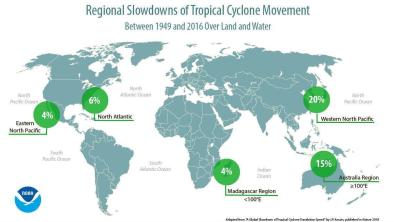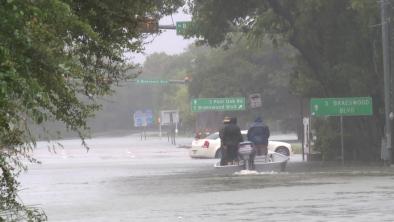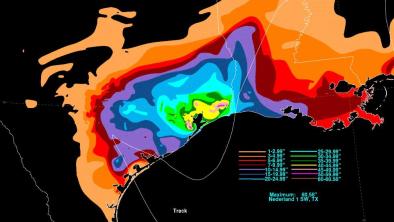Science Source
Attribution of climate effects on Hurricane Harvey's extreme rainfall in Texas
- 60-member ensemble simulations suggest that post-1980 climate warming could have contributed to the 4-day precipitation that fell on southeast Texas during 26-25 August 2017 by approximately 20%, with an interquartile range of 13-37%
- States that, while the attribution outcome could change depending on different models or configurations used and different trend periods analyzed, this downscaling approach affords the closest means possible of a case-to-case comparison for event attribution
- Further analysis of large ensemble projections of a global climate model tracking Harvey-like stalling systems indicates an increase in storm precipitation over southeast Texas through the mid-21st century
Related Content
Headline

Jun 6, 2018 | LA Times
Hurricanes and typhoons are slowing down, which means more time to do damage
Headline

Jun 6, 2018 | KPRC
Report gives new insight into just how bad Hurricane Harvey was
Science Source
| Nature
A global slowdown of tropical-cyclone translation speed
James P. Kossin
Headline

May 24, 2018 | The Weather Channel
New NOAA Maps Show the Torrents Harvey Unleashed on Texas


